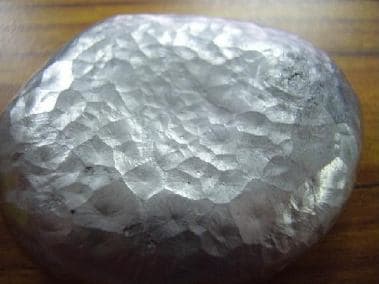
Curated with aloha by
Ted Mooney, P.E. RET

The authoritative public forum
for Metal Finishing 1989-2025

-----
What is the meaning of "fish skin" for the surface texture of aluminum?
Hello,
This term "fish skin" or "fish scales" is actually a translated word from Mandarin.
This term means the surface of an aluminium has a surface texture that looks wavy and feels like "mini mountains" to the touch.
What is the exact term in English? And how does it happen?
Regards,
Aluminium - Pasir Gudang, Johor, Malaysia.
2005
Does this term apply to any particular processed method of aluminum? We used to get this on 6061 alloy extrusions that were etched to long, or were over-stretched. I haven't worked in an aluminum mill in about 16 years but if I remember right we referred to it as crappy looking. (Extrusion Surface Defining, vol. 2,pg. 742, para. 7)

Sheldon Taylor
supply chain electronics
Wake Forest, North Carolina
2005
2005
I have read further about this thing, and I found something in the internet called the 'orange peel'.
Is 'orange peel' term and 'fish skin' terms the same?
The raw material that made the 'fish skin' affect is AC8A, where composition is:
Component Composition %
0.8-1.3 Cu
0.7-1.3 Mg
11 - 13 Si
max 0.8 Fe
0.8-1.5 Ni
Even the raw material has the surface look of this fish skin.
What is your opinion?
- Pasir Gudang, Johor, Malaysia
Orange peel and fish skin(scales) are not the same thing, at least not in english. Orange peel refers to a surface that looks like the peel of an orange. I think I understand what you are looking at by your description, but the surface you are describing is the result of a process(metallurgical or mechanical). You still haven't said how the aluminum is being processed, and what effect it's having on the product. Are you trying to reproduce the surface or change it? Do you just need a description for a QC spec?

Sheldon Taylor
supply chain electronics
Wake Forest, North Carolina
2005
In the non ferrous industry "orange peel" refers to a rough surface that is generally attributed to excessively large grain size of the material and is often seen easier by etching the surface. The grains are usually uniform or eqiaxed and can be caused by overheating during annealing. Also, small reductions is area followed by annealing. We refer to "fish scales" when large grain material is"drawn" or rolled and these grains get elongated. Again, easily seen by etching or with a bit of basic optical microscopy. Hope this helps.
Jay Maliphantretired metallurgist - Mt Warrigal, NSW, Australia
2005
2005
We are trying to make the look on the surface. The effect, well, none really, one of our customers want that look, so we gave them.
0_o
From what I know, this is what I encountered during the production process:
1: Early after we remelted the aluminium, and then casted out, the surface texture is small.
2: Then in the middle of the casting round, it went bigger.
3: The texture then becomes small again near the end of the process.
4: From what I know, if the melt was de-fluxed properly, then the shape is bigger.
Customer says: "Me want big fish skin" - the bigger, the better.
I have photographed pictures of the surface:


My question is: What is really happening until the surface has this look? And how to make "it" bigger?
Thanks to anyone that can help.
- Pasir Gudang, Johor, Malaysia
Q, A, or Comment on THIS thread -or- Start a NEW Thread